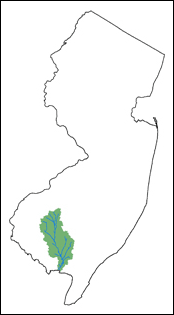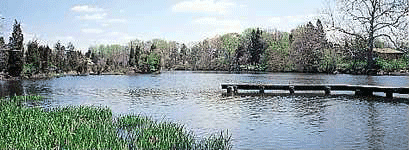 The Maurice River and three of its tributaries, the Muskee, Menantico and Manumuskin Creeks, were designated as Wild and Scenic Rivers by Congress in 1993. This Southern New Jersey river system is the second largest source of water to the Delaware Bay, with the first being the Delaware River. The main stem of the river is approximately 50 miles long. Its headwaters are found at the confluence of Still Run and Scotland Run where each feeds into Willow Grove Lake. North of Willow Grove, these streams branch into many small tributaries that extend as far north as Monroe Township, in Gloucester County. The river becomes navigable south of the City of Millville. The watershed is a clean, natural environment that supports a great variety of plant and animal life. Citizens United has chosen to work to protect this region for many reasons.
The Maurice River and three of its tributaries, the Muskee, Menantico and Manumuskin Creeks, were designated as Wild and Scenic Rivers by Congress in 1993. This Southern New Jersey river system is the second largest source of water to the Delaware Bay, with the first being the Delaware River. The main stem of the river is approximately 50 miles long. Its headwaters are found at the confluence of Still Run and Scotland Run where each feeds into Willow Grove Lake. North of Willow Grove, these streams branch into many small tributaries that extend as far north as Monroe Township, in Gloucester County. The river becomes navigable south of the City of Millville. The watershed is a clean, natural environment that supports a great variety of plant and animal life. Citizens United has chosen to work to protect this region for many reasons.
Ecological Significance
These Wild and Scenic rivers boast vast wetlands and adjacent forest complexes which are important habitat for a diversity of wildlife species. The region supports New Jersey’s greatest concentrations of threatened and endangered plants and animals. Its largest stand of wild rice attracts thousands of wintering waterfowl to the area each year. The mouth of the river is a critical staging area for migratory shorebirds. Each spring thousands of shorebirds feast on horseshoe crab eggs deposited on the beachfront. The upper rivers also host breeding osprey and eagles.
Rich Cultural History
Thousands of years before European settlers arrived, Native Americans used the resources of the river. The river’s European name is thought to be derived from the Prince Maurice, a 17th century Dutch ship reputed to have sunk in its waters. The river is the homeport of the AJ Meerwald, an oyster schooner restored by the Bayshore Discovery Project. It is a sailing classroom offering an interpretative experience for school groups and the general public.
At one time the marshes of the Maurice River were lined by diked farms. Today, with the exception of the Burcham farm, all the marshes are once again flowed by the tide.
Economic Importance and Recreational Opportunities
The Maurice River supports such industries as commercial crabbing, eeling, net fishing and oystering; activities which are dependent upon the river’s ecological integrity. Pleasure boating, canoeing, sports fishing and railbirding are just a few of the recreational activities pursued on the river.
River Recollections Project:
 We believe that people who have experienced the resource often are the best group to tell the story of the river - people whose families made their livelihoods on the river or who enjoyed the many recreational opportunities that the area affords. We hope you will glean something of the character and importance of the rivers from their interviews and from the historical snippets gathered in our recollections project.
We believe that people who have experienced the resource often are the best group to tell the story of the river - people whose families made their livelihoods on the river or who enjoyed the many recreational opportunities that the area affords. We hope you will glean something of the character and importance of the rivers from their interviews and from the historical snippets gathered in our recollections project.